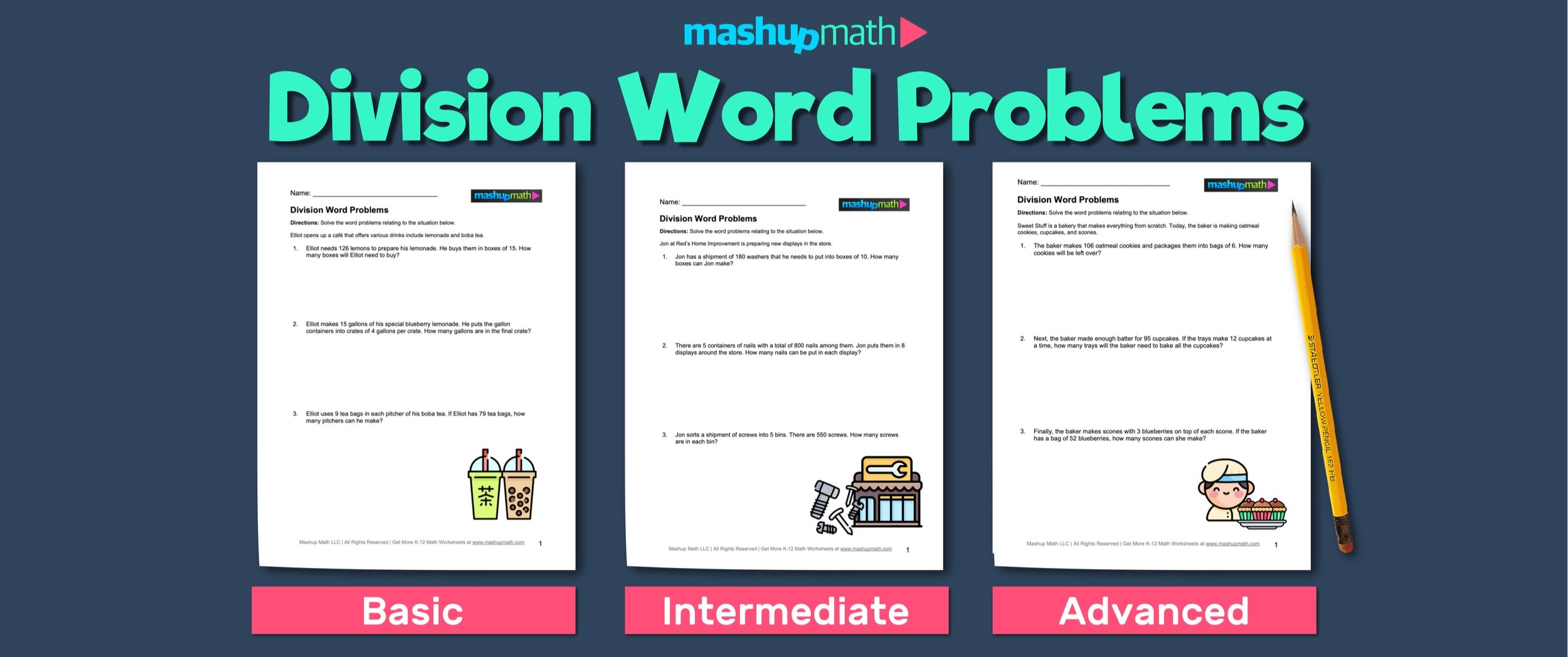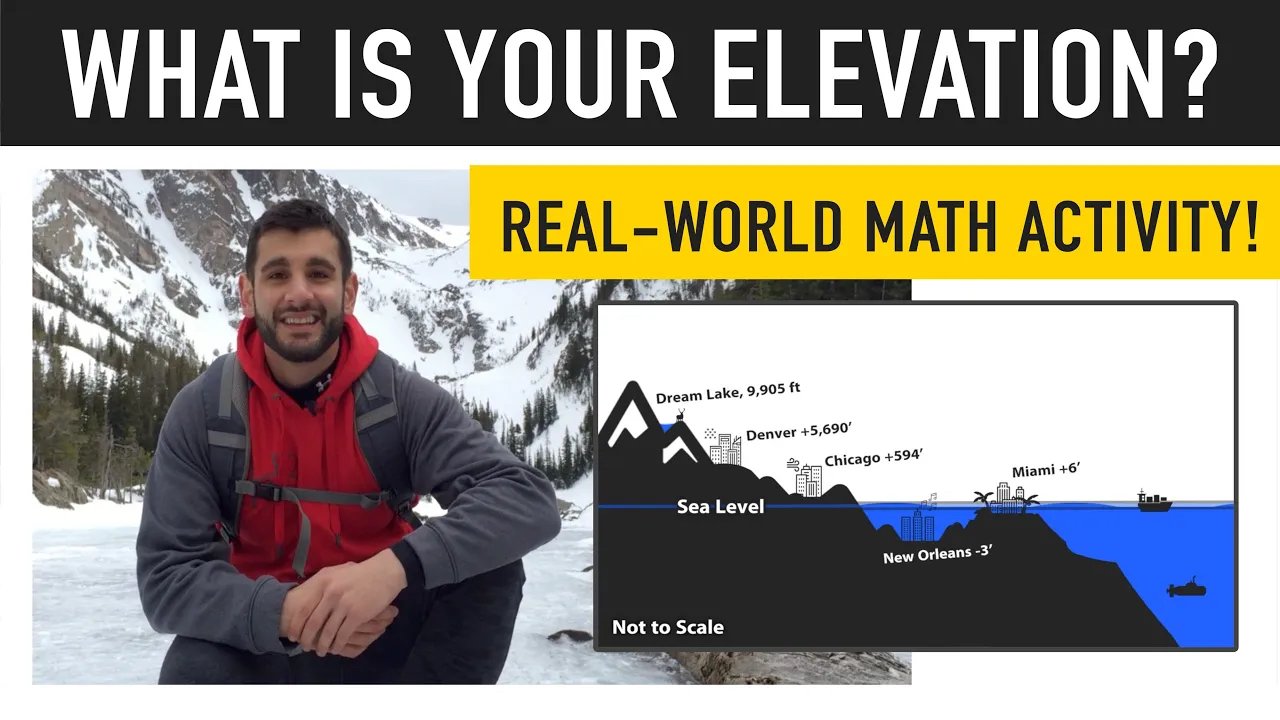3rd Grade Word Problems—Free PDF Worksheets with Answer Keys
Looking for Free Printable 3rd Grade Math Worksheets?
Whether you are a 3rd grade classroom teacher or a parent of a 3rd grade student, you could use some free and engaging word problems for 3rd grade students to help them to develop important foundational math skills. This page shares a huge collection of 3rd grade word problems that cover topics including addition, subtraction, two-step problems, elapsed time, and more.
Jump to a Topic:
Whether you’re in need of worksheets for addition or subtraction word problems, two-step word problems for 3rd grade students, telling time and elapsed time word problems, area and perimeter word problems, or even measurement word problems, the 3rd grade word problems worksheet collection below will surely have something for you.
All of our 3rd grade math word problems worksheets are easy to print and share in your classroom.
3rd Grade Word Problems: Single-Digit Addition
▶ Math Skill Focus: Simple Addition, Adding Single-Digit Numbers
The following 3rd Grade Word Problems focus on basic addition in real-world scenarios.
You can preview any of the worksheets in this collection by clicking on any of the image boxes below, and you can download the corresponding PDF file by clicking on any of the blue text links. Each PDF file will include a set of word problems for 3rd grade students followed by a complete answer key on the last page.
For example, Dotty made 2 sugar cookies and 7 chocolate chip cookies. How many cookies did she make in total?
Worksheet A
Worksheet B
Worksheet C
These 3rd grade word problems worksheets focus on the basic foundational skill of adding single-digit numbers in a real-world context. They require students to identify key information, use mathematical thinking, correctly perform simple addition, and express their answer in writing.
3rd Grade Word Problems: Double-Digit Addition
▶ Math Skill Focus: Simple Addition, Adding Double-Digit Numbers
Once your students have mastered solving single-digit word problems for 3rd grade, the next step is to work through similar problems that involve adding two-digit numbers to solve word problems related to real-world scenarios.
For example, Elly is making donuts to sell at a local bake sale. He bakes 24 chocolate donuts, 21 vanilla donuts, and 15 cinnamon donuts. How many donuts did Elly bake?
Worksheet A
Worksheet B
Worksheet C
Do you want more free 3rd Grade Math Activities in your inbox every week?
3rd Grade Word Problems: Single-Digit Subtraction
▶ Math Skill Focus: Simple Subtraction, Subtracting Single-Digit Numbers
The following 3rd Grade Word Problems focus on basic subtraction in real-world scenarios. Once students have mastered these types of 3rd grade math word problems, they can move onto the double-digit subtraction word problems in the next section.
For example, Ruben planted 12 flower seeds in his garden. After the first week, 3 of the seeds sprouted. After the second week, 5 more of the seeds sprouted. How may of the seeds did not sprout?
Worksheet A
Worksheet B
Worksheet C
3rd Grade Word Problems: Double-Digit Subtraction
▶ Math Skill Focus: Simple Subtraction, Subtracting Double-Digit Numbers
Once your students are comfortable with solving 3rd grade math word problems involving single-digit subtraction, they can take the next step to solving problems involving finding the difference of two-digit numbers in a word problem format.
For example, Bethany has to cleanup after a dinner party. She has to wash 28 dishes in total. She has already washed 12 of the dishes. How many dishes does she have left to wash?
Worksheet A
Worksheet B
Worksheet C
In the next section, we will share some word problems for 3rd grade that focus on mixed addition and subtraction, where students will have to extend their thinking to using the context clues from each problem to determine whether they have to perform addition or subtraction to solve each problem.
3rd Grade Word Problems: Mixed Addition and Subtraction
▶ Math Skill Focus: Mixed Addition and Subtraction, Word Problem Solving
This next set of 3rd grade math word problems require students to use their math skills to determine whether or not they have to use addition or subtraction to solve each word problem.
For example, There were 24 notebooks in a bin. Students took 11 for their backpacks. How many notebooks are left in the bin?
3rd Grade Word Problems: Two-Step Word Problems
▶ Math Skill Focus: Use addition and/or subtraction to solve two-step word problems
One of the biggest differences between 2nd grade math and 3rd grade math is that 3rd graders begin learning how to solve word problems that require multiple steps to solve.
For example, Joey has 10 apples. He gives 4 apples to Josh and 3 apples to Jane. How many apples does Joey have left?
Worksheet A
Worksheet B
Worksheet C
The next two sections will share word problems for 3rd grade students that focus on two auxiliary topics: elapsed time and area and perimeter of rectangles.
3rd Grade Word Problems: Elapsed Time
▶ Math Skill Focus: Solve word problems involving time, units of time (minutes, hours, etc.), and elapsed time
Outside of learning how to solve word problems involving operations, another important 3rd grade math topic is dealing with time, units of time, and elapsed time. This section shares three 3rd grade word problems worksheets related to elapsed time.
For example, Jackson started his homework at 3:15 PM. He finished at 3:50 PM. How many minutes did he spend on completing his homework?
Worksheet A
Worksheet B
Worksheet C
3rd Grade Word Problems: Area and Perimeter of Rectangles
▶ Math Skill Focus: Solve word problems involving area and perimeter of rectangles
This final section includes 3rd grade math word problems worksheets on finding the area and/or perimeter of rectangular figures in real-world scenarios.
For example, Aaron is building a small rectangular flower box that is 5 feet long and 3 feet wide. What is the area, in square feet, of Aaron’s flower box?
Note that Worksheet A focuses on area only, Worksheet focuses on perimeter only, and Worksheet C involved mixed area and perimeter 3rd grade math word problems.
Worksheet A
Worksheet B
Worksheet C
Looking for More 3rd Grade Practice Worksheets?
Be sure to visit our Free 3rd Grade Math Worksheet Library, which shares hundreds of free PDF practice worksheets for a variety of 3rd grade topics.
Helpful Hints for Solving 3rd Grade Math Word Problems
The focus of our 3rd grade word problems worksheets is to give early elementary students to apply their procedural math skills to real-world situations and scenarios. Rather than just asking students to solve a simple math operation problem (e.g. 9 + 7 = ?), these types of problems are more advanced, as they require students to apply reading comprehension and to use context clues to find answers.
Since math word problems are more advanced, many students will initially struggle with them, and it takes time and practice to get better at solving 3rd grade word problems (one-step or two-step) whether they involve addition, subtraction, multiplication, mixed operations, elapsed time, or area and perimeter.
If your 3rd grader is having a hard time with solving any of the problems on any of our 3rd grade word problems worksheets, here are a few helpful hints to improve their chances of correctly solving any given word problem:
Read Each Question Carefully: One of the biggest reasons why 3rd graders struggle with word problems is because they fail to read each question carefully and correctly assess exactly what the problem is asking them to do. Before students attempt to solve a math word problem, they need to read to problem, identify and keywords or important information, and identify exactly what the question is asking them to do. Many students will benefit greatly from using a marker to underline key information or by using a colored highlighter.
Ask Questions Before You Start: While this advice applies to solving any math problem, it is particularly useful whenever students are working on math word problems. Once you have carefully read a question and identify the important information, you should ask yourself “what is this question asking me to do?” and “what will the final answer look like?”. These two questions help students come up with a plan before they attempt to solve a problem. For example, if a question asks students to find the area of a rectangle, they should be aware that their final answer will have to be in terms of square units.
Helpful Hints for Solving 3rd Grade Word Problems: Always show your work and answer using complete sentences.
Show Your Work: All of our 3rd grade word problems worksheets require students to show their work. But, what does showing your work actually look like? In addition to students writing out how they performed their operations, they should also be encouraged to use additional visual aids such as drawing diagrams or using tally marks. For example, when solving an area of a rectangle word problem, it is incredibly helpful to draw a rectangle and label the length of each side before attempting to solve the problem. Or, if a question involves combining a pile of 13 apples with a pile of 9 apples, students can draw each pile and then count the total number of apples.
Write Your Final Answer in Sentence Form: In math, word problems typically have “word answers”, so students should get used to expressing their final answer to any word problem by using a complete sentence. While this is a general rule, it is good practice for students. For example, when solving the problem “Ethan read 32 pages on Monday and 21 pages on Tuesday. He wants to read 120 pages this week. How many more pages does he need to read? “, the final answer is not just 67, but “Ethan needs to read 67 more pages.”























